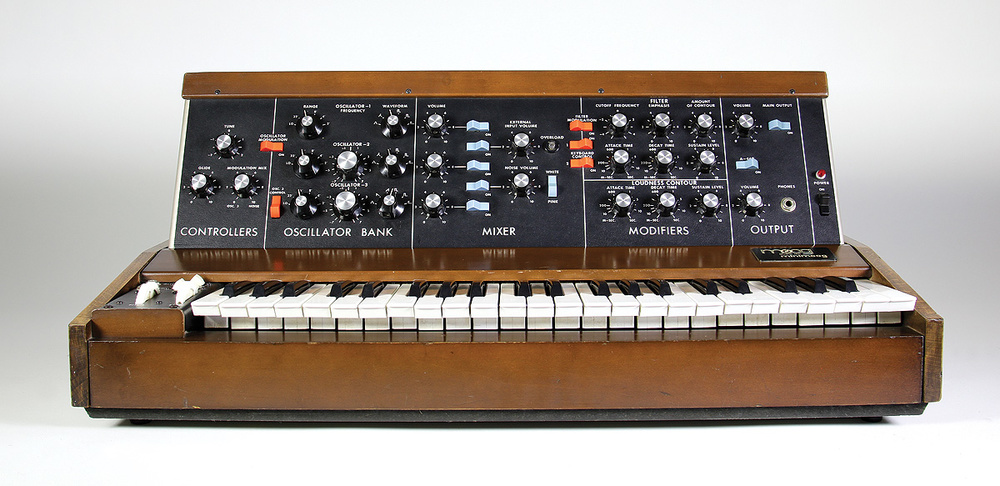Moog Bass sounds make appearances in lots of places, from P-Funk to Michael Jackson, to Herbie Hancock; it’s a synth that not only got the job done but left a tasteful mark all over music from many genres.

Characteristics Of The Moog Synth Bass
- Fast attack
- Quick decay
- High resonance filter
- 3 oscillators
The specific patch we are building today is based on “Let’s hear it for the boy”.
I will be using Ableton’s “Analog” to recreate this sound
Since bass sounds are generally mono, send oscillator 1 and 2 to amp 1 by choose this quick routing option.

If you don’t see the quick routing options, you just need to click over by the volume on the right and it should appear.
Snappy Moog Bass attack
The sharp evolving punch of this bass sound comes from a fast opening filter envelope.
If you’ve never heard of that before, grab a copy of The Quick Synth Map
Start by pulling out a lot of the high end using the filter. I have mine set to about 400 Hz and with a resonance of about 35%
To get the fast opening filter sound, we will need to adjust the filter envelope. Set the attack to roughly 75 ms and the envelope value to 5.5
This is what it should look like.

Make your Moog Bass Thicker
In the synth world, this is accomplished by adding some “detuning”. It’s not enough to make it out of tune, but the slight variation in pitch creates something called phase cancellation.
I have Osc 1 set to +.4, and Osc 1 set to -.3. A little goes a long way.
The waves, which are now moving at different speeds, cancel each other out slightly in different areas of the frequency range slowly and in an evolving pattern.
The result: thick synth awesomeness
To further this effect, add a little “unison”
Unison doubles the sound output and detunes it slightly. Creating even more phrase cancellation.
If all goes well, this is what your screen should look like.

Moog Bass Octaves
For this patch, I like to make oscillator 1 an octave higher, and add a little sub-bass to oscillator 2.
The higher octave sounds a little bit like an electric bass.
The sub-octave is what brings the Moog character .
You can find the sub by clicking on Osc 2 and looking towards the bottom right of Analog.

Vibrato
In this song, there is a bit of vibrato towards the end of longer notes. We can achieve that by using vibrato with a 250 ms attack.
For this patch, a good amount of Vibrato makes sense. I use about 75 %. Adding some attach makes it so that the original note sounds first, and vibrato is slowly added over time. To me, this sounds the most authentic.
Here is what my parameters look like.

That’s All She Wrote
Need a way to easily remember synth parameters and what they do?
Grab The Quick Synth Map.